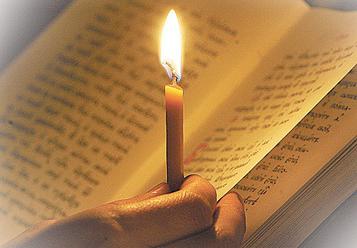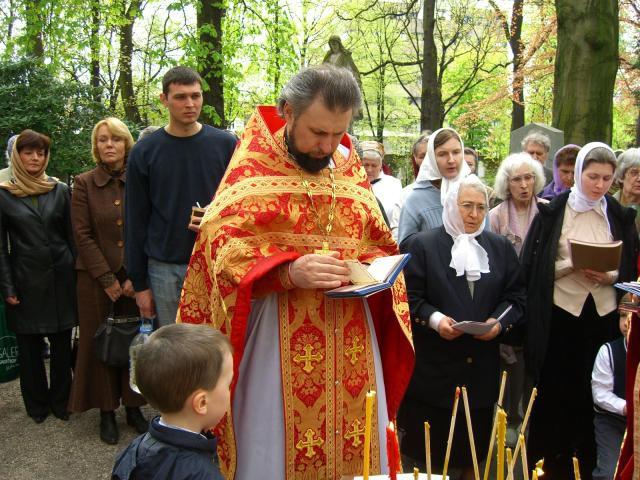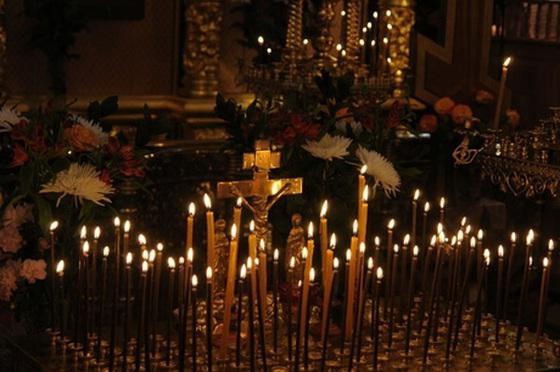Radonitsa - what is this holiday? Rules and traditions of commemoration of the dead
Often you have to hear questions, especially fromYouth: "Radonica - what is this holiday and when is it celebrated? And if its name comes from the word "joy", then what is it about? "Now, when Orthodox culture returns to the life and consciousness of the people, it is very appropriate to talk about it.
Radonitsa: what is this holiday
Orthodox Church in the second week afterEaster, on Tuesday, set the day of the special commemoration of the dead - Radonitsa. In its name, the word "joy" really sounds. Firstly, because the most joyful Christian holiday continues - Easter. Secondly, because our relatives, having completed the mortal earthly path and having left work and adversity, did not die, but went into the world where Jesus Christ prepared us for his death and resurrection. The awareness that separation from them is only temporary and on some day we will reunite, can not but inspire joy in the heart of a believing person.

On this day in the churches after the eveningdivine services, and sometimes after the Liturgy, a special funeral service is performed. Unlike the usual, it is accompanied by Easter songs, bearing in themselves the joy of giving eternal life. In addition, prayers for the deceased are committed in cemeteries, while visiting the graves of loved ones.
The substitution of imaginary real traditions
A sad fact, but for a long periodwhen the Orthodox culture was superseded from the consciousness of people, the day of remembrance of the departed was forgotten, Radonitsa. What a feast, remembered only a few. Pious Christian traditions were replaced by purely pagan customs. And this is not surprising, because always in place of the persecuted true faith there are wild superstitions.

First of all, this refers to the prevailing in ourit's time to drink alcohol on graves. To mention the deceased with vodka or wine is an exclusively Soviet innovation. The Church teaches that the souls of our loved ones need prayer for them and good deeds done by us on their behalf. The booze, arranged in cemeteries, only offends their memory.
Also, among the customs rejected by the church,there is a habit to leave food and Easter eggs on graves. As for the allegedly pious tradition of putting a pile of vodka, black bread and photography - this is absolutely absurd.
Currently, the church is doing a great jobon the revival of forgotten traditions and holidays. The answers to the questions connected with the holiday under the name "Radonitsa" are given - what kind of a holiday, how to celebrate? Signs of a new attitude towards the national tradition are becoming more and more noticeable.
Correct content of the grave
All nations of the world have territories whereresting the ashes of the deceased, are considered sacred places. Even pagan laws guaranteed their inviolability. Especially in the Christian cemetery, the graves of people who have passed away, but who are awaiting a future resurrection, should be kept in proper order.

Even our distant ancestors, who lived in paganism,marked burial places by hills. They are still at the heart of the arrangement of modern graves, transformed into various forms and compositions. Common among them is the symbol of our future salvation, the Holy Life-Giving Cross, installed on the grave. It can be depicted on a gravestone or mounted over a tombstone.
In the Orthodox Church, dead people are acceptedto call the deceased. This is not accidental. The Savior gave us eternal life, and therefore the grave is only a temporary haven. There will come a day of resurrection, when all will rise to eternal life. Therefore, it is the duty of every Christian to keep the grave of a person close to him in order.
Cross - the oldest and most important element of the gravestone
Special importance is attached to the cross. Above the grave of an Orthodox Christian, he symbolizes that under him in the ground a seed is concealed, ready to grow into a new life. It is always put at the feet of the deceased. It is necessary to make sure that the cross never glanced sideways, was well-groomed and duly colored. For the soul that is in the next world, even the most modest and discreet cross is more important than expensive and magnificent tombstones. The abundance of granite and marble is more often the vanity and pride of the deceased's relatives, and not his soul.

Radonitsa in the writings of theologians
Radonica - holiday, worship, traditions and everythingthe rite of which dates back to ancient times. This is evidenced by St. John Chrysostom. In his writings, he writes that during the early Christians in cemeteries, a special commemoration day associated with Easter was celebrated. The joy of moving into a new life, and not grief, is the meaning laid down in the holiday, called Radonitsa (Radunitsa). The history of the holiday became the topic of research of a number of theologians. Much attention in her writings was given to her by the most famous religious figure, Metropolitan Anthony of Sourozh.
Radonica - what a holiday, how to celebrate?
According to the Orthodox tradition, beforego to the cemetery, you should visit the temple, submit a note about the commemoration of the deceased in the altar, and after the liturgy to serve a requiem. It is also recommended to receive the Body and Blood of Christ. Upon coming to the grave, first of all, you should light a candle and perform the lithium established by the church. It is advisable to invite a priest for this, but if there is no possibility, you can limit it to a short version, the text of which is easy to find in the prayer book. After this, it is necessary to put the grave in order and just stay for a while with her in silence, remembering the deceased.

Always, except prayers for the repose of the soul of the deceased,The good deeds that we made on his behalf bring him great benefit. The most convenient time for this is Radonitsa. What is this holiday if after it there is no feeling of joy? It is her that will create the consciousness of the benefits brought by us and the deceased, and alive. Radonitsa is a festival of joy and for those who have left the earthly life, but have come to life eternal, and for the living, who have received the hope of immortality.
</ p>>






